North Atlantic Treaty Organization (NATO)
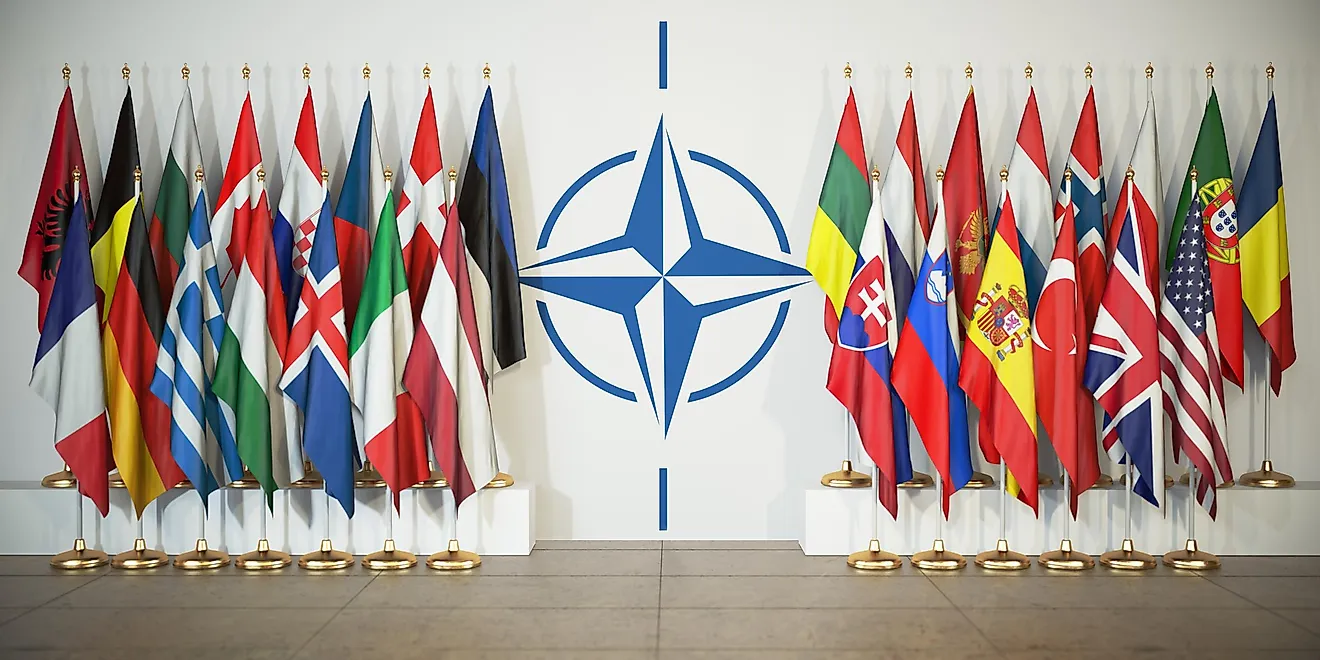
- NATO is a political and military alliance with 30 member states.
- NATO was founded in 1949 on the principle of collective security.
- Under the terms of the North Atlantic Treaty, an attack on one NATO member is perceived as an attack on all NATO members.
NATO, which stands for North Atlantic Treaty Organization, is a political and military alliance of 32 North American and European countries. The purpose of NATO is to guarantee the security and freedom of its member countries through both political and military means. In terms of politics, NATO strives to promote democratic values and enable its members to consult and cooperate on matters related to defense and security in order to solve problems, build trust, and prevent conflict.
Contents:
The NATO Flag
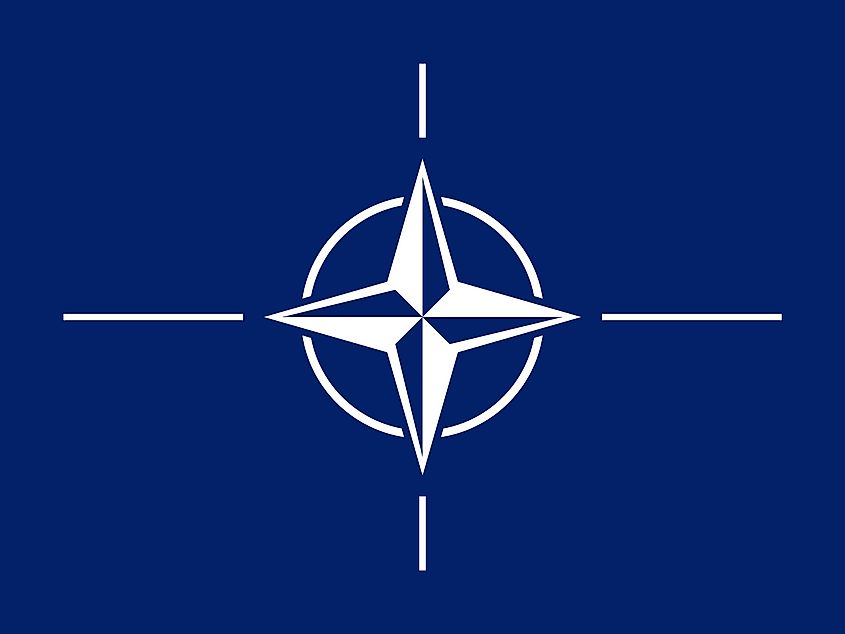
The NATO flag consists of a white compass rose on a dark blue field, with white lines stretching out from the four points of the compass. The navy blue represents the Atlantic Ocean. The compass rose and the four white lines emanating from its points symbolize the movement towards the path of peace. The dark blue and white colors of the flag represent the shared desire of NATO member states to maintain peace. The basic design of the flag is attributed to a member of the organization’s International Staff.
The Concept Of NATO
The whole idea of NATO revolves around the concept of collective security, which is a term used to describe countries coming together in the face of a common threat. After World War II ended, the countries of Western Europe, the United States, and Canada perceived the Soviet Union as a common threat to the basic principles of freedom and democracy that all these countries supposedly stood for. Thus, the leaders of the aforementioned countries decided to create a defensive alliance in order to counter the threat that the Soviet Union and its European satellite states posed to their countries’ freedom and sovereignty.
The agreement that created NATO is known as the North Atlantic Treaty, hence the organization’s acronym. The treaty was signed by NATO’s 12 founding members on April 4, 1949, in Washington DC, which is why the agreement is sometimes referred to as the Washington Treaty. The treaty derives its legitimacy and authority from Article 51 of the United Nations Charter, which affirms the right of countries to defend themselves both individually and collectively.
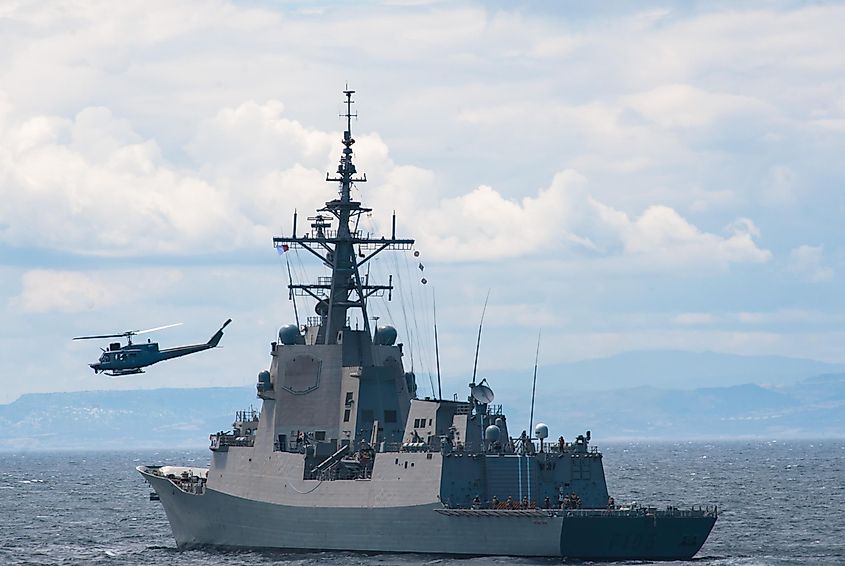
Under the terms of the Washington Treaty, each member state of NATO commits to assuming the risks, responsibilities, and benefits of the collective defense that the organization provides. The treaty also states that NATO’s members form a unique community with common values, which include democracy, individual liberty, human rights, and the rule of law.
NATO’s commitment to the collective security of all of its members is best exemplified in Article 5 of the Washington Treaty. This article stipulates that if one of the member states is attacked, that attack will be perceived by other member states as an attack on all of NATO’s member states. It would be a long time, however, before this article of the treaty would actually be invoked after the first signing of the treaty. Also, Article 5 does not automatically commit NATO members to declare war when one member state is attacked. Rather, it is up to each country to decide how to respond should an attack on a fellow NATO member occur.
The History Of NATO
The idea of countries coming together to counter a common threat is not new. It has existed for about as long as there have been nation-states. History is filled with conflicts in which countries come together to protect themselves against what they perceive to be threats to their security, sovereignty, and values. The idea for the creation of NATO came shortly after WWII came to a close. The leaders of Western Europe were growing worried as they observed the Soviet Union asserting their control over the Eastern European countries that they had occupied during the war. They were concerned that the Soviet Union would soon try to impose its ideology on the rest of Europe. At the same time, the countries of Western Europe were dismantling much of their defense capabilities following the brutality of the Second World War.
In January of 1948, British Foreign Secretary Ernest Bevin suggested the drafting of a treaty that would create a regionally-based military alliance to provide collective security, based on the principles of the UN Charter. The US was willing to lend military support to Western Europe, but only under the condition that Western Europe was united. The European countries of France, Belgium, Luxembourg, the Netherlands, and the United Kingdom responded to this stipulation by creating what was known as the Western Union, which was designed to strengthen ties between the five countries and provide a mechanism of mutual defense. This Western Union formed the basis for the negotiations that took place in order to establish what became NATO.
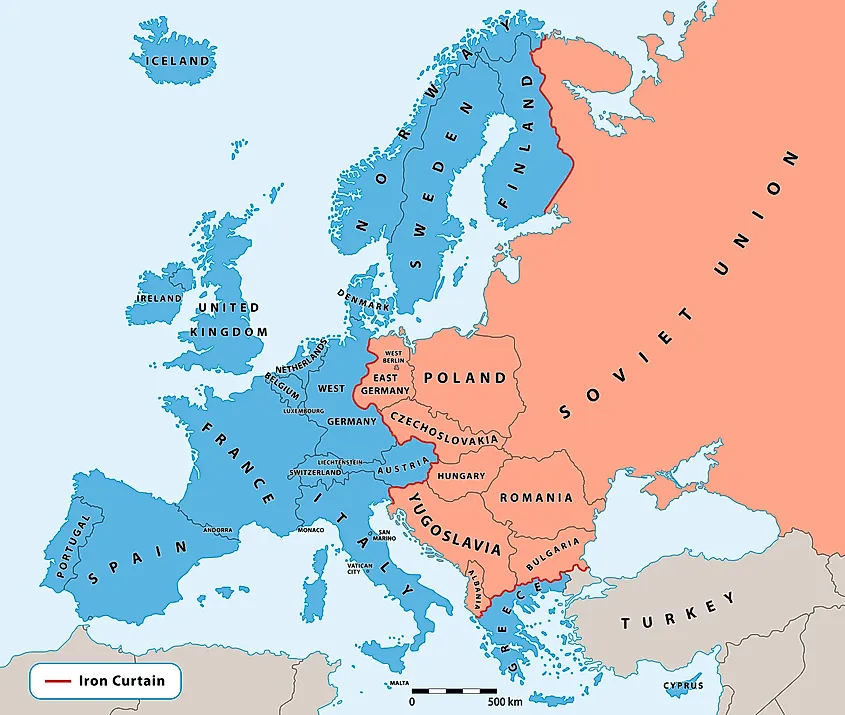
For about 40 years, NATO’s main objective was to counter the threat posed by the Soviet Union and its satellite states in Eastern Europe, which were united under what could be described as the communist version of NATO, the Warsaw Pact. But in 1989, communism in Europe was coming to an end. The fall of the Berlin Wall represented the fall of the Iron Curtain that had divided Europe between east and west since the end of WWII. Two years later, the Soviet Union, which led the communist bloc, ceased to exist. Thus, NATO was left without an adversary. Indeed, after the collapse of communism and the end of the Cold War, some wondered if NATO could endure in the absence of the threat it was made to counter.
NATO did endure. In fact, it was not during the Cold War that military forces under the banner of NATO became active, but after. In 1995, for example, NATO forces were activated in order to implement the Dayton Peace Accord that ended the civil war in Bosnia and Herzegovina. In 1999, the organization took military action to protect ethnic Albanians in the Serbian province of Kosovo.
Two years later, Article 5 of the Washington Treaty was invoked for the first time following the 9/11 terrorist attacks on the US. This led to NATO’s first counterterrorism operation, which involved aircraft patrols in the skies over the US. Another counterterrorism operation was undertaken by NATO in the form of Operation Active Endeavour, which involved NATO forces patrolling the Mediterranean Sea in an effort to prevent terrorist activities that could disrupt one of the world’s busiest trade routes.
In 2003, NATO took command of the peacekeeping force in Afghanistan, which was established after the US invasion of the country in response to the 9/11 attacks. Between 2009 and 2016, NATO was involved in counter-piracy operations in the Gulf of Aden and the Horn of Africa. In 2011, following a popular uprising in Libya against its ruler, Moammar Gadhafi, NATO forces took charge of enforcing UN resolutions to protect Libyan civilians. It began by enforcing an arms embargo and a no-fly zone in the country, but eventually undertook air and naval strikes against Libyan military forces.
NATO Expands
As NATO’s role in the world has grown, so has its membership. When the organization was founded, it had 12 member states. During the Cold War, three new countries joined the group. Turkey and Greece joined in 1952, and West Germany joined in 1955. In 1982, Spain became a member of the alliance. Thus, when the Cold War came to an end, NATO’s membership had grown to 15 members.
By 2020, the number of countries that were part of NATO doubled to 30 countries. This great expansion began in 1999 when three countries that were formally part of the Warsaw Pact were admitted into the alliance. These countries were Poland, Hungary, and the Czech Republic. Five years later, seven additional countries from Eastern Europe were allowed to join. Croatia and Albania joined the alliance in 2009. The former Yugoslav republic of Montenegro would become a NATO member in 2017. In 2020, NATO welcomed the former Yugoslav Republic of Macedonia, now known as North Macedonia. The Nordic countries of Finland and Sweden joined in 2023 and 2024, respectively.
NATO Today
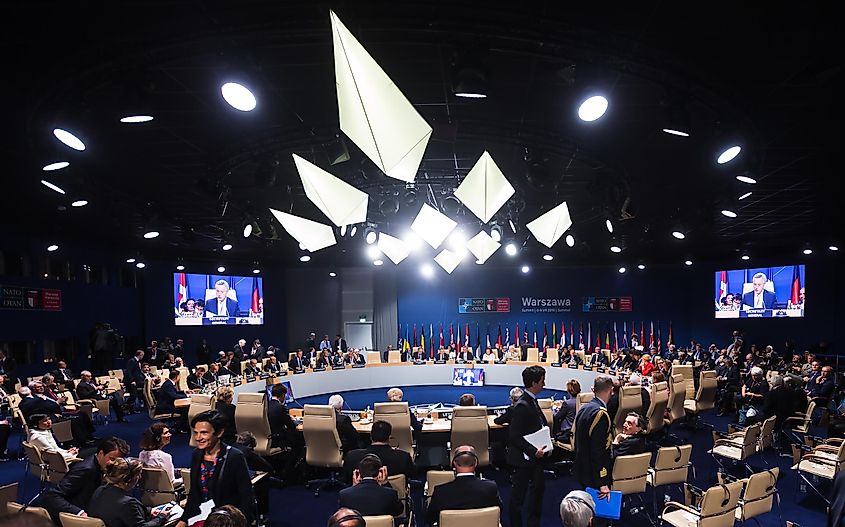
Far from being a relic of the Cold War, NATO remains active around the world. In fact, the organization has just under 20,000 military personnel involved in NATO activities worldwide. These activities include NATO’s leadership of operations in Kosovo, Afghanistan, and the Mediterranean Sea. They also include a training mission in Iraq, in which NATO is helping to develop the capacities of the country’s security forces. NATO also provides support to the African Union in its peacekeeping efforts. One of NATO’s latest operations includes air policing in Eastern Europe. According to NATO, this air policing is being done in response to the Russian invasion of Ukraine in 2014. Indeed, NATO claims to have intercepted a number of Russian aircraft violating the airspace of its allies.
As its operations around the world continue, NATO still strives to expand its membership. The organization even has a unique program designed to help countries that wish to join the alliance, known as the Membership Action Plan (MAP). Ten Eastern European countries were participants in this program before they became NATO members. At present, Bosnia and Herzegovina is participating in this program in the hopes of becoming a full member state of NATO in the future.
NATO Countries
| NATO countries | Year joined |
| Albania | 2009 |
| Belgium | 1949 |
| Bulgaria | 2004 |
| Canada | 1949 |
| Croatia | 2009 |
| Czech Republic | 1999 |
| Denmark | 1949 |
| Estonia | 2004 |
| Finland | 2023 |
| France | 1949 |
| Germany | 1955 |
| Greece | 1952 |
| Hungary | 1999 |
| Iceland | 1949 |
| Italy | 1949 |
| Latvia | 2004 |
| Lithuania | 2004 |
| Luxembourg | 1949 |
| Montenegro | 2017 |
| Netherlands | 1949 |
| North Macedonia | 2020 |
| Norway | 1949 |
| Poland | 1999 |
| Portugal | 1949 |
| Romania | 2004 |
| Slovakia | 2004 |
| Slovenia | 2004 |
| Spain | 1982 |
| Sweden | 2024 |
| Turkey | 1952 |
| United Kingdom | 1949 |
| United States | 1949 |











